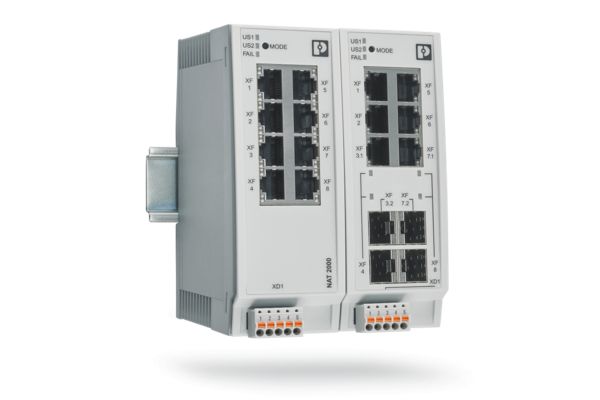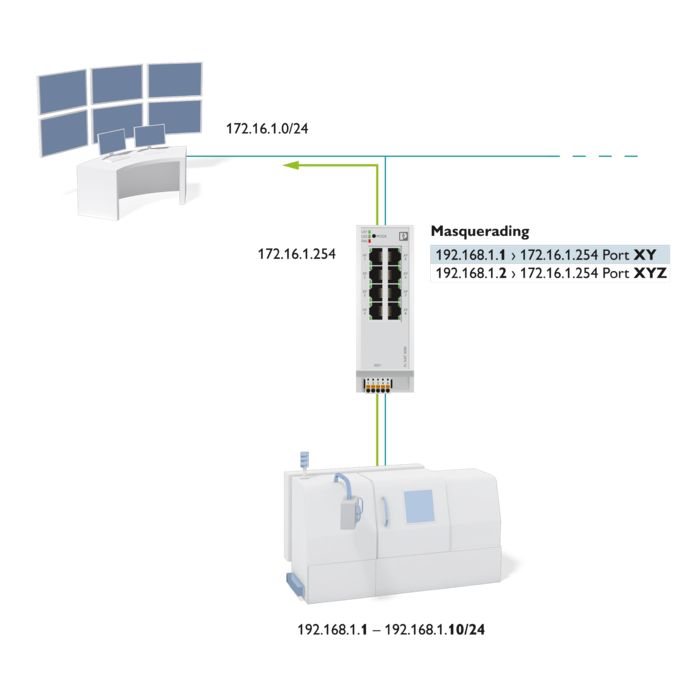
With 1:1 NAT, each device in the LAN is allocated an IP address from the higher-level network (WAN). The device can then be addressed from the WAN via this assigned address. The advantage: router or gateway configuration is not necessary in the WAN. Communication can be established from both the LAN and the WAN, and is not restricted to dedicated protocols. The disadvantage: an IP address must be reserved in the WAN for each accessible device in the LAN.













